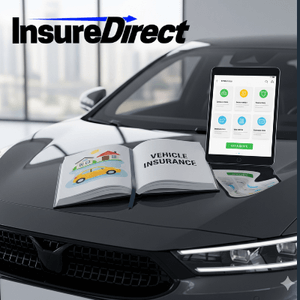So, car insurance. Everyone tells you it’s important but, honestly, until I got into my first little fender bender—I didn’t really get it. The thing is, you don’t think about insurance until you need it, and by then it’s too late to ask the big questions.
My Take on What Car Insurance Actually Is
Basically, car insurance is this deal you make with some company where you pay them every month (or year, depends how you set it up) and in return they agree to cover you when something bad happens to your car. Crash, theft, tree branch falling on the hood—you name it. Sometimes it covers you, sometimes it covers the other person, sometimes both. Depends on what you buy.
It’s not just about protecting the car itself either, it’s about keeping your savings safe from disappearing in one single accident. That’s the part I never thought about when I was younger.
Why Even Bother?
If you live in most places, you don’t really have a choice—it’s illegal to drive around without at least the minimum coverage. But legal stuff aside, I’ve noticed a few other reasons.
When something breaks, you don’t panic quite as much because there’s backup.
If somebody steals your car (happened to a friend of mine once), insurance usually steps in.
If you’re the one at fault in a wreck, you don’t want to be stuck paying out thousands to fix another person’s vehicle.
It’s peace of mind, simple as that, even though paying premiums always feels a little painful.
The Kinds of Coverage (The Jargon Bit)
I’ll admit, the first time I read about coverage types, I got confused, because it all sounds the same. But here’s how I finally understood it:
Liability insurance: This is the “bare minimum” in a lot of places. Basically, if you hit someone, this pays for them, not you.
Collision: Pays for your own car when you smash into something (or someone). Doesn’t matter if it’s your fault or not.
Comprehensive: Think of it as “everything else” insurance. Stuff like vandalism, storms, or when a deer decides to jump in front of you.
PIP (Personal Injury Protection): Covers you and your passengers’ medical costs, no matter whose fault.
Uninsured/Underinsured: If the other driver doesn’t have enough (or any) insurance, this saves you from footing the bill.
Once I understood these, picking a plan felt way less overwhelming.
Why Premiums Cost What They Cost
So here’s the part that annoys me sometimes. Premiums aren’t just random numbers, the companies have all these little boxes they tick. Age, gender, where you live, the kind of car you drive, your driving history—seriously, everything. I even heard credit score can affect it (which felt weird to me, but apparently it’s true in a lot of places).
If you’re 19 with a shiny sports car and two speeding tickets, forget it—your rate’s gonna be sky-high. Meanwhile, my uncle who drives a boring sedan and never leaves his small town? Dirt cheap.
What People Actually Pay
Costs are all over the place. In the U.S. I read somewhere it’s like $1,000 to $2,500 a year for full coverage. But that’s an average—you could pay less, could be way more. It’s really one of those “depends on your situation” kind of things.
How I Learned to Save a Bit
Insurance isn’t cheap. But there’s a few tricks that really helped me bring the cost down:
Get quotes from more than one place. (I once saw a $600 difference between two companies for basically the same thing).
Bundle policies—home and auto together usually gives you a discount.
Drive safe. Obvious, yeah, but tickets and accidents stick around for years.
Adjust the deductible. If you can afford to pay more upfront in case of an accident, your monthly rate drops.
Ask for discounts. A lot of companies don’t exactly advertise them—you’ve got to ask.
Funny Myths I Believed Once
There’s some car insurance myths I used to buy into:
The color of your car makes it cost more (nope).
Old cars don’t need insurance (uhh, you still need liability at least).
“Full coverage” covers literally everything. (not true, read the policy fine print).
Picking the Right Policy (How I Did It)
Here’s what worked for me:
First I asked myself, do I just need basic legal coverage, or do I want the whole thing?
Then I figured out what I could actually pay without going broke.
Next, I compared a bunch of companies, not just the first one that gave me a quote.
Last step, I read reviews because a cheap company that never pays out isn’t worth it.
That’s how I landed on something that’s decent and not too pricey.
Wrapping Up
Car insurance—it’s one of those things you don’t want to think about but you really have to. I get it, it feels like just another bill every month, but if something goes wrong on the road, you’ll be glad it’s there. Trust me, I’ve been in that situation and it’s not fun without coverage.
Take the time, compare, read carefully, and don’t be afraid to ask questions. That’s how you avoid the nasty surprises later.
If you’re looking for top-notch insurance coverage, InsureDirect has you covered. Getting a home insurance quote is fast and simple. Visit InsureDirect.com or reach out to our corporate office:
InsureDirect Corporate Home Office
618 South Broad Street, Lansdale, Pennsylvania 19446
Email: contact@insuredirect.com
Phone: (800) 807-0762 ext. 602
Protect your home and enjoy peace of mind with the reliable coverage offered by InsureDirect—because your home deserves the best.

